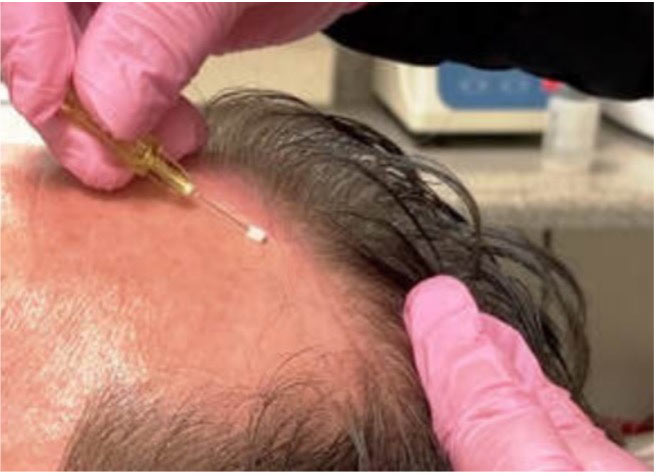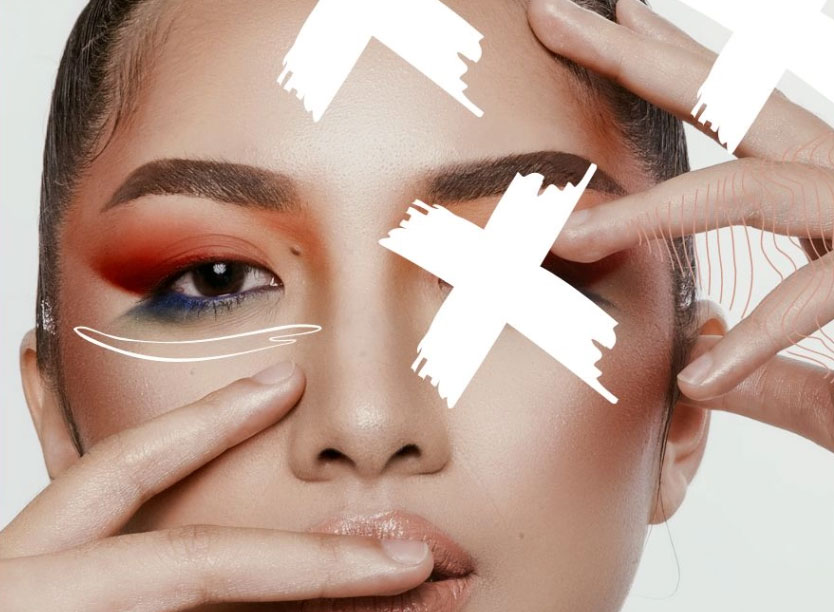TET (Thread Embedding Therapies) provide superior results to Stand-Alone Alopecia Treatments
Combining PDO Threads and other alopecia treatment options is the newest way in treating alopecia conditions while offering additional patient options and solutions for your medical hair restoration therapies. Most non-invasive medical procedures options for androgenetic alopecia (AGA), although effective, tend to show a plateauing off of the response with no further hair growth such as PRP as a stand-alone treatment. Thread Embedding Therapies utilizing PDO threads in combination with other acceptable treatments form new blood vessels (neo-vascularization), regenerate collagen types 1 and 3, and break down fat (lipolysis) optimizing results with such treatments as PRP and Microneedling, Minoxidil and Microneedling, and red-light therapies.


The treatment itself is quick, painless, no downtime with quick recovery. PDO Smooth Sutures (29g or 28g) are inserted under the scalp, leaving behind a microscopic thread which will create a foreign body response, triggering the bodies’ own natural healing mechanism (collagen). Threads dissolve naturally and are absorbed by the body over the course of 4-6 months. This process of forced cellular activity will promote new tissue growth, improve circulation and ultimately help to regenerate the hair follicle. Research shows a significant reduction in hair loss in combination with conventional treatments, as well as new hair growth just one month after treatment!
When PDO Threads are placed strategically within the scalp and increased collagen production and fibroblast stimulation is initiated by the introduction of foreign material in tissue. The benefits of collagen synthesis through the insertion of threads within the scalp include:
- Providing Amino Acids Used to Build Hair:
- Collagen is primarily made up of 3 nonessential amino acids: proline, glycine, and hydroxyproline.
- Hair is primarily made up of the protein keratin: Proline is also the main component of keratin. Therefore, consuming proline-rich collagen will provide your body with the building blocks it needs to create hair.
- Helps Fight Damage to Hair Follicles:
- Collagen can act as an antioxidant and fight hair follicle damage caused by free radicals. Collagen may act as an antioxidant that can fight free radicals and prevent hair damage.
- Prevents Hair Thinning Associated with Aging:
- Collagen makes up 70% of your dermis, the middle layer of your skin that contains the root of each individual hair.
- Collagen contributes to the elasticity and strength of your dermis. Your body becomes inefficient at producing collagen with age and replenishing cells in the dermis. This may be one of the reasons why hair gets thinner over time.
- Since collagen protects the layer of skin that contains hair roots, it may help prevent age-related hair loss and thinning.
Ideally, patients in the earlier stages of hair loss or thinning where hair is just beginning to thin are the best candidates. Patients need to have hair follicles for PDO threads to work. Just like with other treatment methods, if there’s no follicle in the scalp tissue (fibrosis) in that area, you’re not going to get a new follicle to reappear. However, dormant hairs can be re-activated by PDO Threads or in combination therapies such as PRP and PDO Threads. The most robust improvement is with women and men with high numbers of weak (intermediate) hairs.
This unique approach and use of PDO Threads in combination with other modalities give physicians “value-added” options proven superior to other stand-alone methods for the correction and reversal of hair loss and hair thinning. Though many forms of hair loss have a hereditary component it does not affect the newer forms of prevention and treatment that give correction and reversal of hair loss in both men and women.
This proprietary protocol is revolutionary within the aesthetic industry and within the training supplied by Illari Threads, LLC and will allow for more predictable results in a safe, non-invasive manner.

Hair Loss Restoration Procedures are the second most requested treatment segment within aesthetic procedures performed in the United States for 2019. Over 100 million Americans suffer from premature or unexpected hair loss with over 35% being female.
Treatment results vary based on the stage of hair loss (early intervention is best), the addition of other therapies, as well as personal health and lifestyle. Combining PDO threads with tried-and-true hair restoration therapies like PRP (Platelet Rich Plasma) & Microneedling, Minoxidil & Microneedling, and other cutting-edge technology such LLT Therapies is by far the most effective way to combat hair loss non-surgically.
More Articles
Published: Sep 14/2022
What are the differences between PDO, PLLA, and PCL Threads
Thread Lift procedures within aesthetics is experiencing tremendous growth within aesthetics due to their ability to deliver results comparable to surgical procedures though are semi-permanent lasting up to (2) years…
Published: Aug 23/2022
FDA to Crackdown on Non-FDA Cleared PDO Threads
FDA to Crackdown on Non-FDA Cleared PDO Threads. A spokesman for the agency further commented that "it will be increasingly difficult to stop the various channels that people can acquire these non-FDA Cleared devices so the emphasis will be on the physician or healthcare professional administering these unapproved devices"…
Published: Jul 24/2022
Why Incorporate PDO Threads into your Practice?
The United States is one of the largest markets for minimally invasive aesthetic procedures in the world. The demand for PDO Thread procedures has increased exponentially in the past (5) years and will continue to grow at rates over 7.4% CAGR (Compound Annual Growth Rate)…




